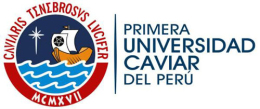
The Pontificia Universidad Catolica del Peru (Pontifical Catholic University of Peru) is a private university, based in Lima, Peru. The PUCP was established by a Catholic priest Fr. Jorge Dinthilhac on March 1st, 1917. It is the country’s first non-profit private institution of higher learning.
The PUCP started with two schools, known as the School of Letters and the School of Laws. Later, in 1933, the School of Engineering and the School of Political and Economical Sciences were established. Two years later, the School of Education was added, followed by the foundation of the Academy of Catholic Art in 1939.
In the 1960’s, a Peruvian priest and an instructor at PUCP developed the first principle of Liberation Theology, embracing and promoting the Marxist socialism and pan-Latin American solidarity. Despite the school’s claim of having catholic affiliation, the Catholic Church refused to recognize the university. This was the time when the population of the school flourished with more than 16,000 undergraduate students enrolled in its 10 schools, pursuing 38 different specialties.
In 1949, the university received its autonomy through the Law N 11003 on April 17, 1949 and Law N 13417 on April 8, 1960, and was subsequently declared as a national university. In 2012, the Holy See deprived the university of the right to use the titles Catholic and Pontifical in its name. It was in this year that the Holy See gave the honorary title of Pontifical by Decree of the sacred Congregation of Seminaries and Universities to the catholic university.
Today, the university has 10 schools as well as other facilities like the Language Learning Center called the Idiomas Catolica (IC), the Confucius Institute PUCP, the Cultural Center, and the CENTRUM, which is the school’s facility, offering business studies at the master and doctoral level.
PUCP’s Electronic Engineering Department under its Faculty of Science and Engineering has designed and created a robotic arm that has two degrees of freedom and will be used as an application for drawing diagrams.
The researchers also focus on the study of mobile robots with stereo vision for locating objects. Using this research, UAV’s are able to interact with their environment while performing more efficiently in their tasks.